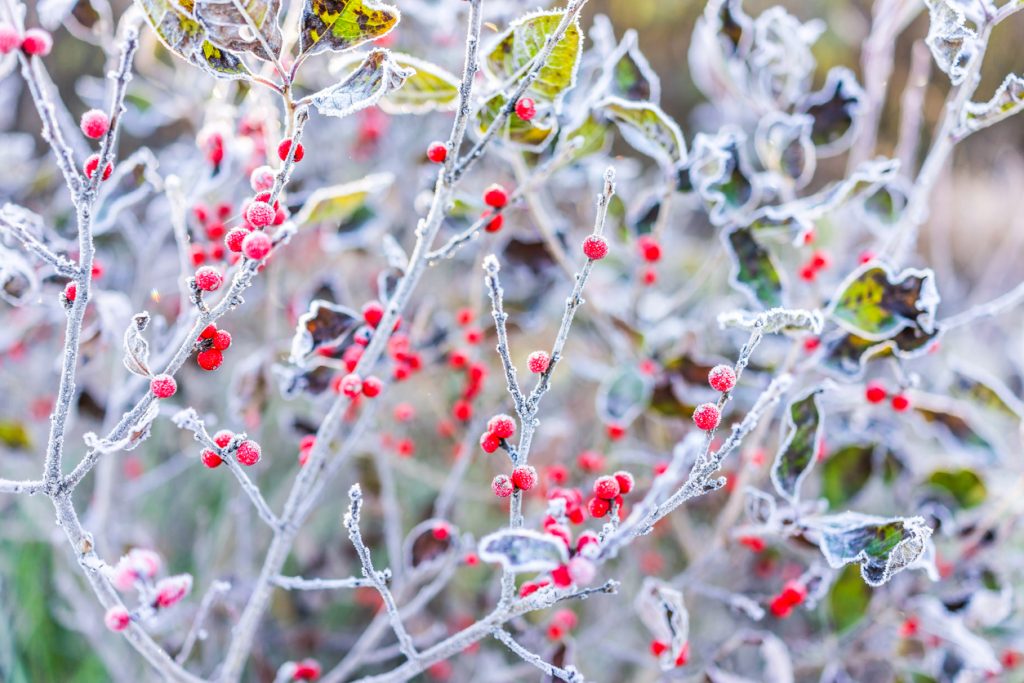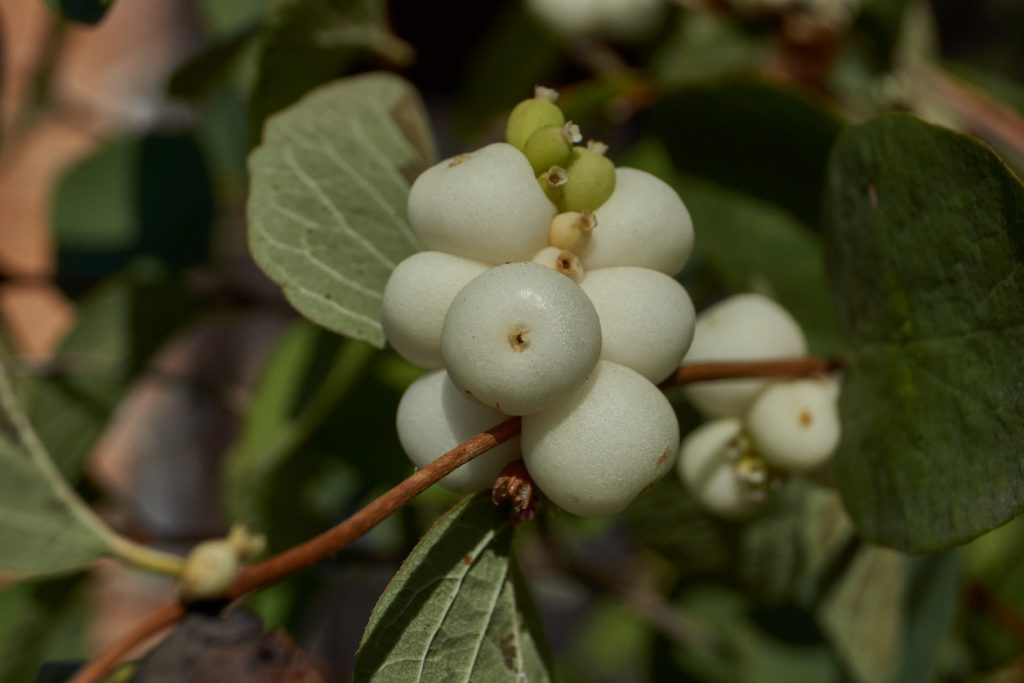When you think of vibrant landscapes, snowy winter ones don’t always come to mind. But as a native plant nursery, we know the unique plant species that provide color all winter long. In fact, many native plant species are their most showy in cold months. And these resilient species play a vital role in supporting wildlife when food is scarce.
Add native species like these for beauty and to benefit wildlife.
Winterberry (Ilex verticillata)

Winterberry, a native deciduous holly, is a must-have in any winter garden. Its vibrant red berries provide a burst of color against the backdrop of a snowy landscape. The berries persist throughout the winter. This valuable food source supports bird species like cedar waxwings, woodpeckers, and cardinals.
Shop Winterberry from Forrest Keeling
Deciduous Holly (Ilex decidua)
This native holly produces an abundance of bright red berries in winter. Songbirds including cedar waxwings and cardinals feed on the fruit in late winter. While not a preferred wildlife food, trees are often stripped after heavy snow.
Deciduous holly is dioecious with both male and female plants needed to fruit. Tiny white flowers appear before the leaves in March and April. One or two male plants planted near the showy female plants ensure fruit production.
The small tree is effective as a specimen, in groups, or as a hedge in low spots with moist soil.It adapts to full sun to part shade and naturalizes to create thickets in full sun.
Shop Deciduous Holly at Forrest Keeling
Blackhaw Viburnum (Viburnum prunifolium)
Black-haw viburnum is a large, native shrub or a compact tree. It is adaptable to a variety of soil conditions. Perfect for naturalized areas, it makes an excellent addition to a winter garden. In spring, new, copper-colored leaves emerge followed by white, flat-topped flowers. In fall, black fruits contrast with the pinkish-red foliage. Birds and small mammals relish the fruits.
Shop Blackhaw Viburnum at Forrest Keeling
Eastern Red Cedar (Juniperus virginiana)
Cold hardy and adaptable, the eastern red cedar is a workhorse in native landscapes.
These dependable evergreen trees are especially useful on tough sites. For example, sites that are dry, alkaline, or windy. Its fibrous root system is always valuable for erosion control. When grouped, eastern red cedar makes an excellent windbreak.It is also salt-tolerant and is useful near roads, driveways, and sidewalks.
Eastern red cedar is great for wildlife. The prickly foliage creates valuable cover. And its blue-green berry-like fruits, (modified cones), attract a variety of birds.
Shop Eastern Red Cedar at Forrest Keeling
Snowberry (Symphoricarpos albus)

Snowberry bears clusters small, bell-shaped summer flowers followed by snowy white berries. The clustered fruits remain attractive on the naked stems, all winter long.
This rounded and bushy shrub tolerates a variety of conditions and soil types. The best flowering and fruiting will occur in full sun. Snowberry spreads by suckering rhizomes to form a colony. The bushes offer shelter for summer birds and important berries in the middle of winter. The berries attract birds,but somelarger mammals also feed on them, including deer and bears.
It is also a larval host plant for butterflies. These include the Vashti Sphinx, the Snowberry Clearwing, and the Elegant Sphinx.
Shop Snowberry at Forrest Keeling
Winter Gardens Start at Forrest Keeling Native Plant Nursery
Forrest Keeling native plant nursery offers a vast selection of native plants, trees, and shrubs. Native plants offer year-round beauty no matter the size of your garden or landscape. And our RPM-production method and proprietary soil media help us grow the best! Forrest Keeling’s RPM-produced natives grow twice as fast and exhibit superior survivability.
Have a remediation or mitigation project? Want to create a more environmentally friendly property? Contact a Forrest Keeling team member today for more information.
Forrest Keeling…it’s where the best trees begin!
